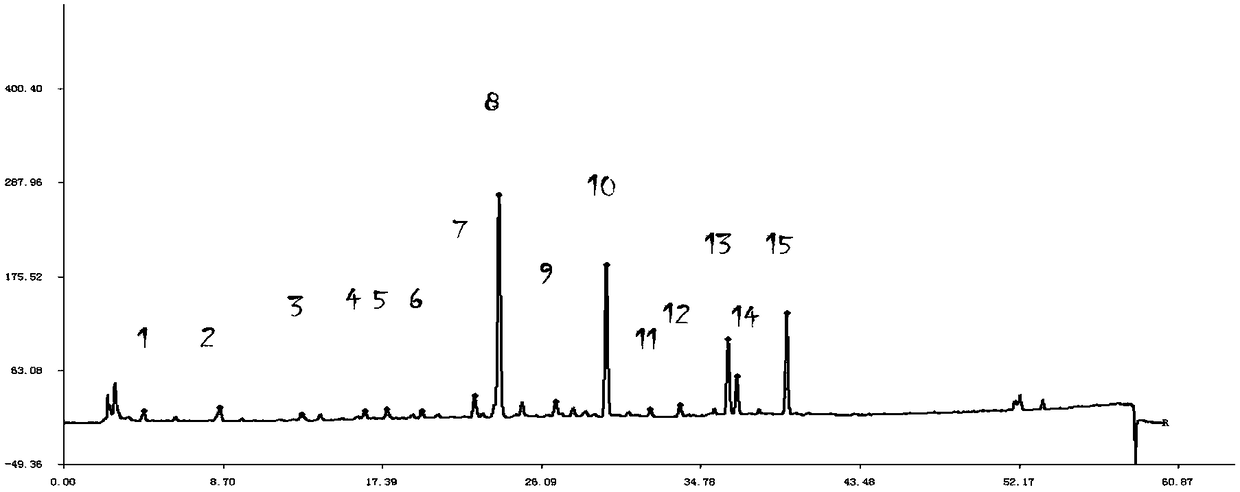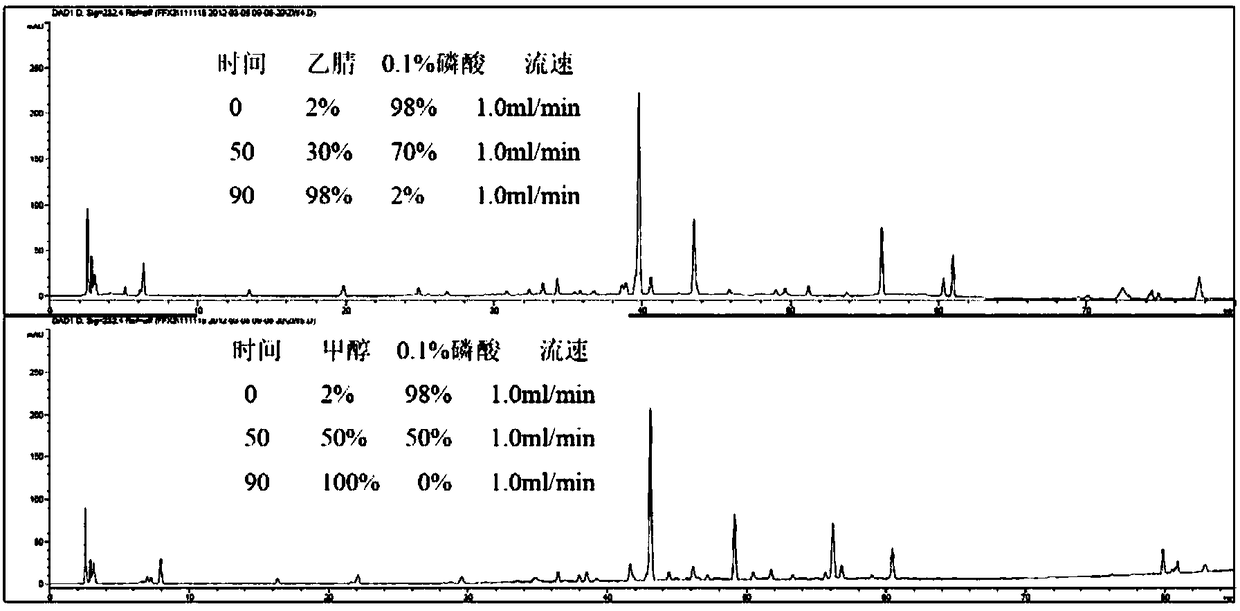Fingerprint spectrum of herba rabdosiae japonicae as well as establishment method and application of fingerprint spectrum
A technology of blue calyx incense tea vegetable and fingerprint spectrum is applied in the field of quality control of traditional Chinese medicinal materials to achieve the effects of monitoring quality, high sensitivity, good separation and identification
- Summary
- Abstract
- Description
- Claims
- Application Information
AI Technical Summary
Problems solved by technology
Method used
Image
Examples
Embodiment 1
[0053] The establishment of embodiment 1 fingerprint collection:
[0054]Take 1.0g of the powder of the above-ground part of the blue calyx fragrant tea, accurately weighed, accurately add 25mL of 70% methanol containing 0.2% formic acid, weigh the weight, ultrasonic for 30min, let cool, weigh, make up the lost weight with solvent, shake Evenly, filter, and get the continued filtrate to obtain the test solution;
[0055] (2) HPLC detection:
[0056] Draw above-mentioned step (1) gained need testing solution, inject in the high-performance liquid chromatograph and carry out high-performance liquid chromatography detection, obtain described fingerprint collection;
[0057] Wherein, the chromatographic detection conditions are as follows:
[0058] C18 chromatographic column (250mm×4.6mm, 5μm); methanol (A)-0.1% phosphoric acid (B) gradient elution, the elution program is shown in Table 1, and the running time is 55min; the volume flow rate is 1.0mL / min; the detection wavelength...
Embodiment 2
[0063] The comparison fingerprints of the blue calyx fragrant tea vegetables generated in Example 1 are used as a comparison, and the Chinese medicine chromatographic fingerprint similarity evaluation system software provided by the National Pharmacopoeia is used to measure the similarity of the fingerprints of 12 batches of blue calyx fragrant tea vegetables samples. see results figure 2 and Table 2. A total of 15 common peaks were detected in 12 batches of S. indigo, and six main components including rabdosiin, s. The similarity of 12 batches of blue calyx from different places of origin was between 0.874 and 0.990, with an average of 0.9556.
[0064] Table 2 The results of the similarity determination
[0065]
Embodiment 3
[0066] The investigation of embodiment 3 mobile phase solvent system
[0067] Kromasil 100-5C18 (250×4.6mm, 5μm) chromatographic column was selected. Methanol-0.1% phosphoric acid and acetonitrile-0.1% phosphoric acid were used as the mobile phase to test the influence of different solvent systems on the determination. It was found that the chromatogram of the acetonitrile-0.1% phosphoric acid system showed poor separation of phenolic acids and fewer peaks in the chromatogram. The separation of phenolic acid components in methanol-0.1% phosphoric acid system is better than that in acetonitrile-0.1% phosphoric acid system. Finally, methanol-0.1% phosphoric acid is used as the mobile phase for fingerprint determination, see image 3 .
PUM
 Login to View More
Login to View More Abstract
Description
Claims
Application Information
 Login to View More
Login to View More - R&D
- Intellectual Property
- Life Sciences
- Materials
- Tech Scout
- Unparalleled Data Quality
- Higher Quality Content
- 60% Fewer Hallucinations
Browse by: Latest US Patents, China's latest patents, Technical Efficacy Thesaurus, Application Domain, Technology Topic, Popular Technical Reports.
© 2025 PatSnap. All rights reserved.Legal|Privacy policy|Modern Slavery Act Transparency Statement|Sitemap|About US| Contact US: help@patsnap.com



